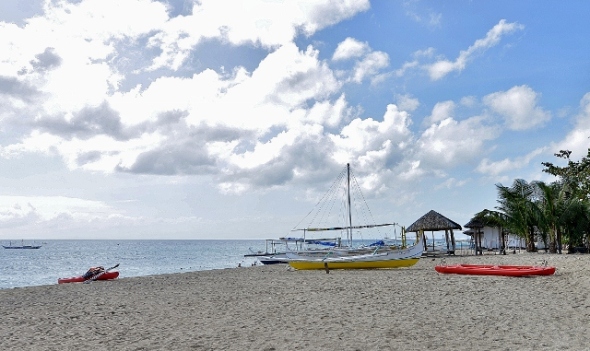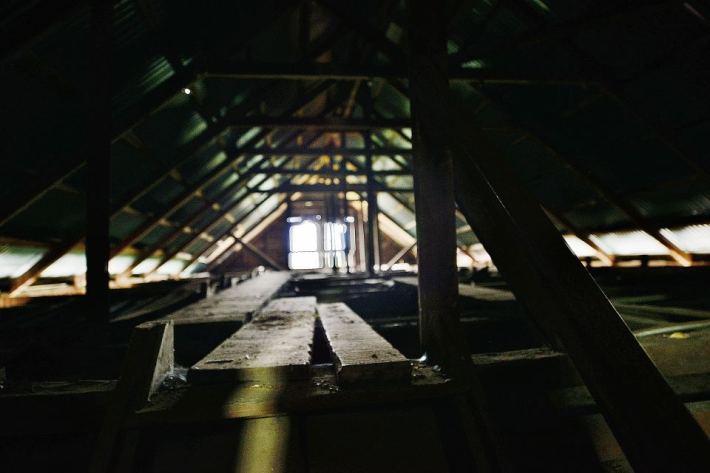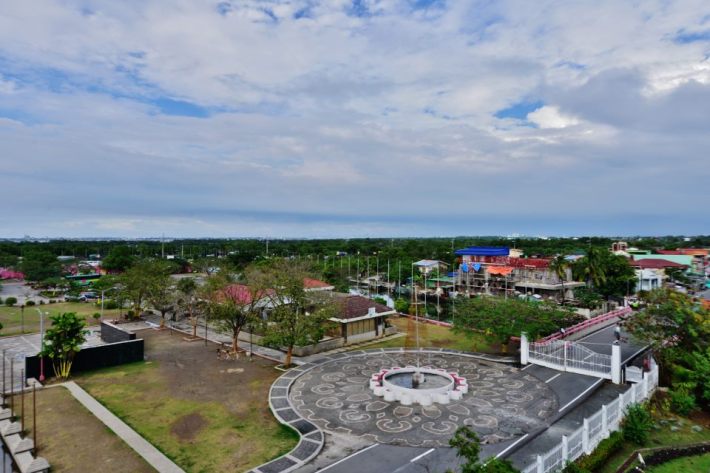I have called Laiya the best beach destination south of Metro Manila. Just the other day, I took my vacationing brother and sister and their families, as well as my mom who is also on holiday, to this beach paradise.


So many options, and this list is maybe just a quarter of places to check out
ONE LAIYA
I first took them to One Laiya, formerly Tayabas Bay Beach Resort which is now dwarfed by a tall building – – a hotel called Estrellas de Mendoza. Old clients of One Laiya may even have difficulty finding the resort. The only clue is that one gets to the gate of a beach subdivision and then take the side roads to the right.

Easily one of the most affordable accommodations are here

This native hut is by the beach. But you will have to use the common toilet facilities, as there is none in this hut.
VIRGIN BEACH RESORT
I visited Virgin Beach Resort next. Seeing how beautiful this place is, I wondered how I missed it the first time.

Virgin feels like an untouched beach paradise

It seems like this place is destined to always be sunny, with bright skies.

Kayak your way to the nearby resorts

The restaurant is so inviting
ACUATICO
On to Acuatico, the premier beach hotel in Laiya. Yes, the only hotel I know without an “off-peak” rate because it is so popular. The weekends are presently booked solid up to May 2013

This infinity pool defines Acuatico

The bar/cafe/resto overlooks the infinity pool and the ocean
ACUA VERDE
Last on my tour is Acua Verde, formerly Balai sa Laiya. This was my favorite resort then, and about a year ago Acuatico leased Balai and called it Acua Verde. Nice to know that they did not fell any of the trees that gave the old Balai a provincial atmosphere. I felt then like I was visitng a relatives beach house in the province. Thankfully, Acuatico just updated Balai into Acua Verde and so now the place actually looks better than my old favorite.




This water feature greets you at the entrance

The accommodations have been raised to Acuatico standards
Accommodations Details:
Virgin Beach Resort: Km 23, Laiya, San Juan, Batangas
Mobile Number:+639178131301, Makati contact : (632) 8152584
website: http://www.virginbeachresort.com
Bamboo cabanas at P5,000 for an overnight stay, P5,500 on weekends. Good for 6 persons. Aircon casitas P7,350 weekdays, P8,100 in weekends. Casitas are good for 4 persons. Discounted rates for 2-nights booking. Rates ae lower on off-peak (July 1-December 14). Minimum charge of P1.400 per person per day for meals (lunch, dinner and breakfast).
Acuatico Beach Resort
Reservations: (632) 4088383, 8927577
website: http://www.acuaticoresort.com.ph
Room rates start at P6,940 (room called Infiniti, with twin bed for 2 persons) to P21,400 (room called Estancia, with 2 queen and 2 twin beds, for 6 persons).Room rates inclusive of breakfast and use of all facilities.
Acua Verde (formerly Balai sa Laiya, right beside Acuatico)
Contact : +632 3817757, 3049901, or mobile number +639175457134
website: http://www.acuaverderesort.com.ph
Rooms are at P6,500 and P7,500 depending on room type. Rates are for 2 persons, and includes breakfast, lunch and dinner.
How to get there: Check out my other blog entry on Laiya.
Question: How do I get to Laiya ?
The first route : SLEX to San Pablo to Laiya(via Quezon Province):

fruits along the way.. rambutan P80/kilo

lanzones at P150/kilo, and avocados
Take the South Luzon Expressway (SLEX) and drive on towards the direction of Sto.Tomas in Batangas. Drive When you hit Sto. Tomas, turn left towards Quezon province, hitting Alaminos, Laguna first. You will pass San Pablo City, and then you will hit the Laguna-Quezon boundary. You will pass by Dolores, and then Tiaong. When you see a huge “SAN JUAN” directional sign on your right, pointing to the right, follow that direction and just turn right. Follow this road until you hit San Juan town proper, about 14 kms away. This road forks at some point, with a little bit of unpaved road towards the end. Take this unpaved road. The unpaved road is so short anyway and you will soon be back to cemented roads. You will then find yourself at an intersection. This is the main highway, and you will see the San Juan Town Hall at the corner. Do not make any turns, just cross the road, and you are on your way to the beach area, around 25 kms ahead. Even as you drive on this road, you will see several signages that refer to beach resorts and subdivisions being developed in Laiya.
The trip is approx 2 1/2 hours from the Villamor tollgate of the SLEX.
Route 2 : STAR Tollway to Lipa and onward to Laiya :
Take the same direction to Sto. Tomas, Batangas, as in the directions above. Drive on to Lipa, either via the old road or thru the STAR TOLLWAY, making your exit in Lipa. From Lipa, drive on to Rosario, the next bigger town. You will pass thru the towns of San Miguel and San Roque before you hit Rosario. From Rosario, drive on to Balugbug. The next big town after Balugbug is San Juan. If you are going to Laiya, then follow the directions I gave in Route 1.
Having taken the 2 routes, I will still recommend Route 1. It is easier to follow, and is not much longer. And then you can afford the adventure of taking the Lipa route on return.






















































